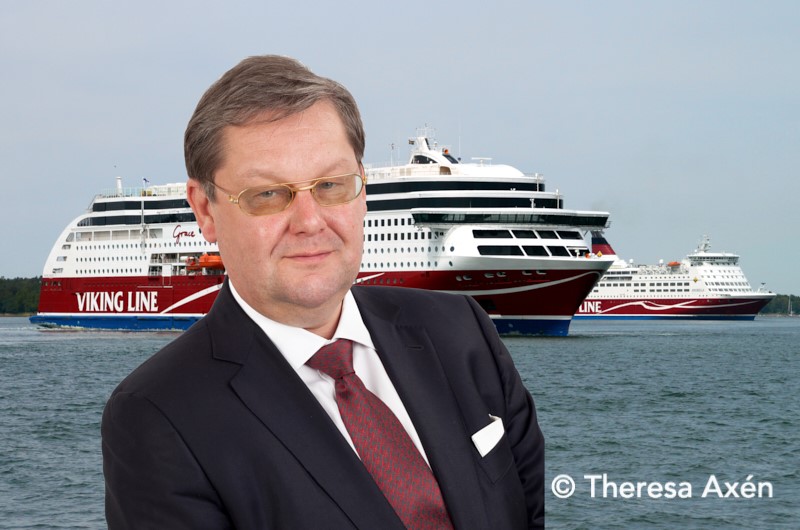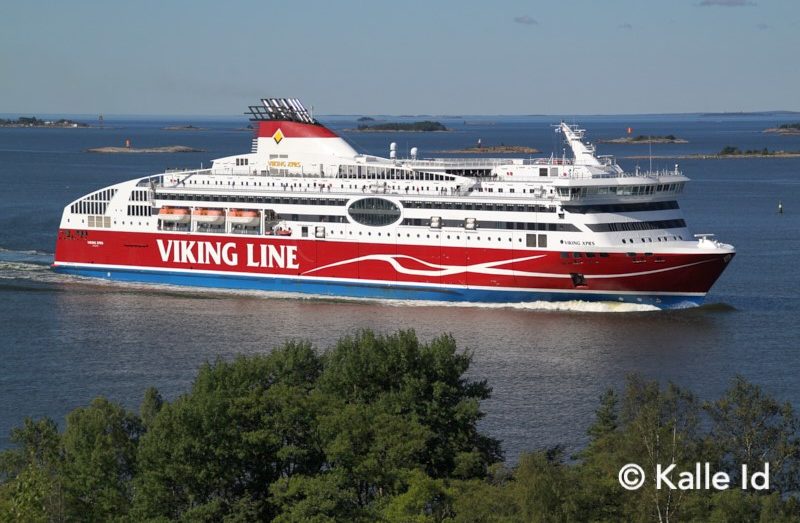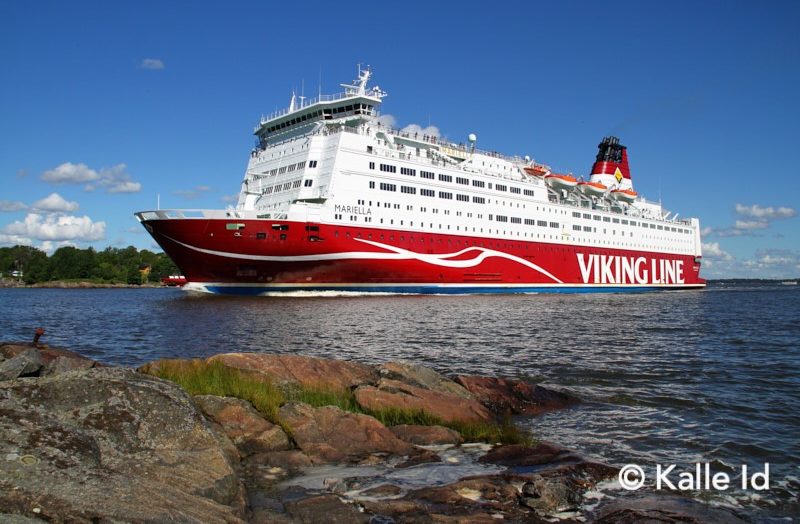With investment first on the VIKING GRACE and now the upcoming newbuilding, it seems the Turku-Stockholm route is your prime service at the moment?
It is the route in which we are currently investing. The reason is that when you put an asset to use, it is very efficiently used on the Turku route. We have exceptionally short harbour turn-around times and the vessel is essentially continuously working for 24 hours a day. In contrast, on the Helsinki-Stockholm route the ships spend approximately seven hours each day in port, so the use of the asset is not nearly as efficient.
On the subject of LNG, quite a few companies are now looking into converting their existing tonnage to run on LNG. Is that an option for you?
We have looked into it, but decided not to convert the older ships – at least at the moment. I think the change to LNG, or perhaps even other environmentally fuels and propulsion systems, will come when we invest in new vessels. It is not quite economically viable to install LNG engines and fuel systems into the older vessels we have – it is an expensive investment and at the same time the ships are quite old to justify that kind of investment.
When you made the order of a new ship from China public, there was some public backslash in Finland for not supporting the Finnish shipbuilding industry. Did any of the public outcry actually translate into changes into the passenger numbers?
Not really, no. Of course, there is always year-on-year variation in the passenger numbers, but we could see nothing that could be attributed to the decision.
Looking further into the future, can you share any thoughts on what services will be next up for investment after the tonnage renewal of the Turku-Stockholm route is complete?
Investment in some form is to be expected on the Helsinki-Stockholm route. Of course, a newbuilt ship is an expensive investment. The alternative is to do a more extensive refurbishments of the old ones. But obviously the Helsinki-Stockholm route is on turn for investment after the Turku route.
Related to that, would second-hand tonnage be an option for renewal on Helsinki-Stockholm or any other of your routes?
It might be possible to find a second-hand vessel that suitable for our needs, but they are not something you find very often. There might be some candidate out there but if there is, we haven’t located it yet. And of course, we need to take into account that you need a sufficient ice class on the vessel for it to be able to operate on our service area, and that is often missing from the second-hand vessels that are available.
Of course, we always have one second-hand vessel, the GABRIELLA on the Helsinki-Stockholm line, which we acquired in 1997. But she is a sister ship to two ships we operated at the time [the AMORELLA and ISABELLA, the latter left the fleet in 2013] that were built in Split in Croatia, which made the GABRIELLA well suited for our purposes.
Moving on to the Helsinki-Tallinn route, there are quite a lot of developments there: Tallink have a letter of intent for a new ship, the City of Helsinki is trying to move cargo to use the Vuosaari freight harbour (some 16 kilometres from the city centre by road), and there are plans to build a fixed link between Helsinki and Tallinn in the form of a rail tunnel. How do you see the future of the Helsinki-Tallinn route for your company?
We have one vessel, the VIKING XPRS, which was built in 2008. She is quite new and we will continue to use her on the route. The competition on the Helsinki-Tallinn line is hard, as you can imagine, and will be even more so when Tallink’s second MEGASTAR enters service. At the same time, increases on excise duties and overall price levels in Estonia have impacted passenger volumes on the route. We find that the route is developing more and more into a pure transport service, with far less emphasis on onboard shopping. This development is something we need to follow and evaluate, to see what is the correct way of addressing these changes.
For our part, we see no future in Helsinki-Tallinn services from Vuosaari. We have one vessel for passengers and cargo, and obviously you cannot split it in two, with one part sailing to the existing terminal in Katajanokka and the other to Vuosaari. You have to operate the service from one harbour, and passengers are not interested in a service from Vuosaari. It is also my understanding that the investment needed in Vuosaari in order to have passenger vessels sailing from there would be very expensive and could not be economically justified, especially after the recent big investment in a new terminal for the Western Harbour [used by Viking’s competitors Tallink and Eckerö Line].
And when it comes to the planned rail tunnel… you also have a tunnel under the English Channel, and you still have ferry services there. The tunnel would be one more competitor on the route, but it is something we could live with. But personally, I am not convinced that there ever will be a tunnel between Helsinki and Tallinn.
Staying on the subject of Helsinki-Tallinn route, it is also your only route that doesn’t have tax-free sales onboard. Does that make it different from your other routes?
Obviously that is the case. One feature of that is that you’re able to buy very large quantities of alcohol that is not tax-free but subject to lower Estonian duties. With the recent increases in Estonian duties, we have seen a change in passenger behaviour: the passengers who buy large quantities no longer do it onboard but travel to Latvia. So they use the vessel to do the crossing and then drive down to Latvia to do their shopping there.
For a more general question: on the Viking Line business model, how important is cargo and how important are passengers?
About 20% of our revenue is from cargo. The cargo has performed well during the past five years, obviously due to the Finnish economy doing better under that period. But the cargo business is very cyclical. When the economy slows down, our cargo revenues will also drop. But, overall, we manage to hold our ground well against our more cargo-oriented competitors, especially Finnlines’ Finnlink service on the Naantali-Kapellskär route [which is essentially a slightly shorter competitor to Turku-Stockholm].
A question that I must ask: there was the recent rumour about Grimaldi being interested in buying Viking Line. Can you comment anything on that?
Only that I heard that rumour myself (laughs). I have no further information. And obviously any potential buyer wouldn’t contact me, they would ask the owners.





